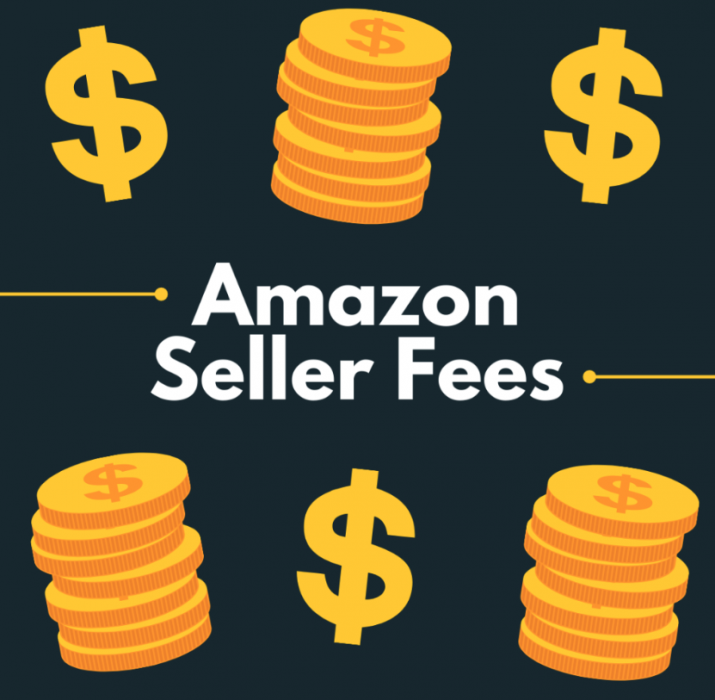When setting up your Amazon FBA business it is important to know which Amazon Seller Fees there are. The better you understand Amazon’s fees the better you can plan for the future growth of your business.
Don’t forget – these fees are excluding VAT as Amazon do not include their VAT within their fees.

From 12th May 2022 a 4.3% fuel and inflation surcharge will be applied to shipments that leave Amazon’s fulfilment centres. This does not apply for return processing fees or for shipments
Amazon Account Type
Firstly it is important to choose which Amazon account type is right for you. We would recommend choosing a professional plan from the outset. This is because you are unlikely to win the buy-box if you are using an individual plan. The buybox is integral to generating sales and therefore without it you are less likely to generate sales.
| Individual | Professional |
| For selling less than 35 items per month. | For selling more than 35 items per month. |
| You pay an additional £0.75 ($0.99) for each item you sell and any additional Amazon fees. | A subscription to a Professional account is £25 + VAT ($39.99) per month. With this subscription you do not pay the additional Amazon fees. |
| You can apply to sell in additional categories. |
Primary Amazon Seller Fees
Referral Fee
This is the fee you pay for selling products on Amazon. The referral fee is applicable to you whether you are a FBA or an FBM seller. The referral fee can be between 7.14-15.3% depending on the brand.
There is also a per item minimum referral fee which costs £0.25 ($0.30). Some of these categories have a different percentage based on the price of the item.
FBA Fee
The FBA fee covers the expense of sending your items out to customers and Amazon’s involvement in the FBA process.
Prepping Fee
The prepping fees cover Amazon prepping your products for sale. However we would suggest avoiding this fee to avoid cutting into your profit margin.
- Label service – Not all products need a label as Amazon often scan the manufacturer label included on the item. However, some items will require a label. In this case we would suggest printing off the label for the product and adding it to the product yourself. This removes the need for you to pay the fee for Amazon’s label service. This service is rather explanatory, and is when Amazon label your items for you.
- Bagging fee – Most items will need to be packaged in a poly-bag; this fee covers this expense. We would suggest buying your own poly-bags and bagging items to avoid this fee.
You could potentially use these services however we strongly recommend doing these steps yourself.
Storage Fees
This fee is for storing your items in Amazon’s warehouses. Due to this we would suggest finding fast selling items. The faster the item sells the smaller the Amazon storage fee. Storage fees are charged between the 7th-15th of each month.
- Hazmat – The term hazmat refers to items which are classified as dangerous or including dangerous elements. This includes items with lithium batteries or chemicals such as nail varnish. Storage fees therefore exist since Amazon must complete and follow more regulations with these items.
- Long-term storage fees – Items qualify for long term storage fees if they have been stored for more than 365 days. This fee is charged monthly. Items can be charged a monthly storage fee of £4.30 ($6.90) per cubic foot. This fee is in addition to the monthly inventory storage fee.
Remember – Check your Recommended Removals report and the Inventory Health Report. By using these reports you can see which items could cause you to be charged a long-term storage fee for.

Additional Amazon Seller Fees
You are less likely to encounter these fees. But they are still handy to be familiar with as your business grows.
Return Fee – This is for customer-returned products where Amazon offers free return shipping. This fee is charged for each item returned in the Apparel and Shoes categories.
Disposal Fee – This is used if an item is deemed ‘unsellable’. For example if a food item has expired and is charged per item. You can also remove inventory from a fulfilment centre by submitting a removal order. Removal orders are charged based on the size and weight of the items.
High-Volume Listing Fee – If you exceed 2 million SKUs within a month you qualify for this fee. It is applied to your highest number of SKUs above 2 million during a month.
Refund Administration Fee – If you refund a customer for an order which you have already received payment for, Amazon will refund you the equivalent amount for the referral fee you paid. This is minus the applicable Refund Administration fee which is the lesser of £5 or 20% of the applicable referral fee.
Unplanned Service Fee – When inventory arrives at a fulfilment centre without proper preparation or labelling, Amazon then completes this for you. This is a per-item fee.
Click here for Amazon’s interactive fees page discussing the different Amazon fees in more detail. Not only this, you can enter your item specifics to receive a prediction of the fees for your items.
In conclusion, we hope that this has helped you to better understand Amazon’s seller fees and how they could potentially affect you. Want to learn more? Check out our Youtube and sign up to Profitl here!
